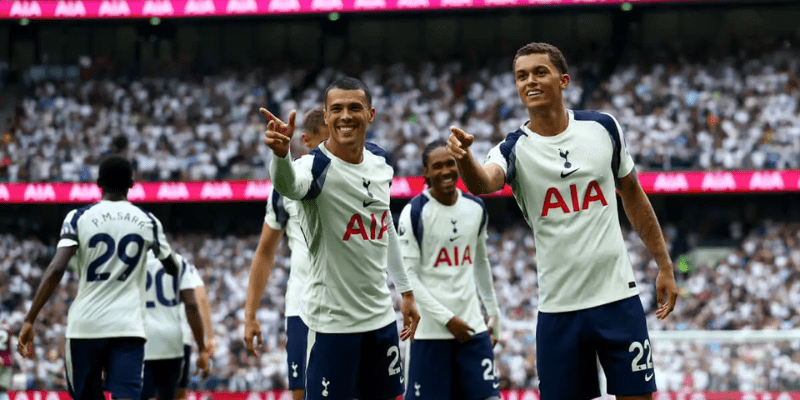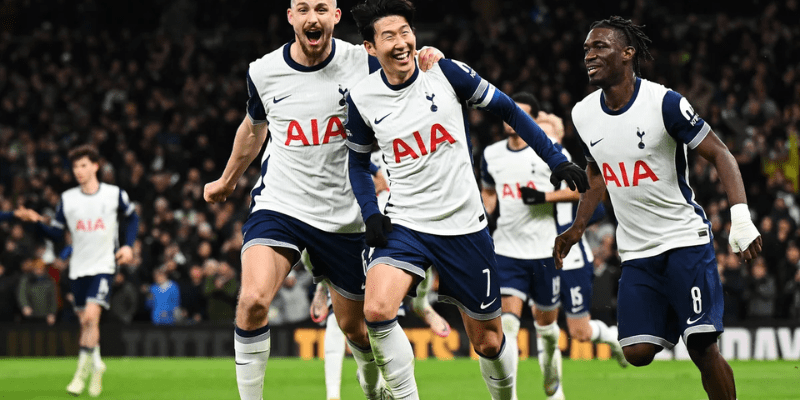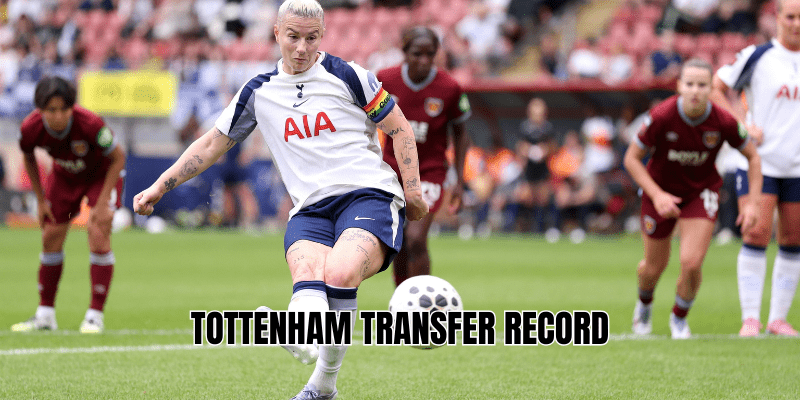From the early days of cautious spending to the modern era’s headline-grabbing deals, Tottenham transfer record history tells a story of ambition, risk, and evolution. At AvigGoal, we’ll dive deep into Spurs’ record signings, biggest sales, transfer trajectories across eras, and what it all signals for Tottenham’s future.
Spurs’ record signings: a rising curve

Tottenham have long been fiscally cautious, but in recent years the club has pushed its boundaries. Here’s a look at the most expensive Tottenham transfer record arrivals — players whose price tags reshaped perceptions.
Top 5 most expensive signings, these are Spurs’ biggest splashes:
- Xavi Simons — ~€65.00 million (, 2025–26)
- Dominic Solanke — ~€64.30 million (, 2024–25) sfermarkt])
- Mohammed Kudus — ~€63.80 million (, 2025–26)
- Tanguy Ndombele — ~€62.00 million (, 2019)
- Richarlison — ~€58.00 million (, 2022–23)
Before these blockbuster deals, the ceiling was significantly lower — Davinson Sánchez (€42 million) and Pedro Porro (€40 million) were once in the top tiers of Spurs’ spending.
Solanke: the record-breaker
When Tottenham triggered the deal for Dominic Solanke in 2024, it set a new club standard. British press pegged the fee around £65 million, shattering previous records. That deal symbolized a turning point: Spurs were no longer just ambitious; they were willing to spend big to compete.
Recent big moves
- Xavi Simons already tops the list as the most expensive newcomer in 2025–26.
- Mohammed Kudus followed closely, showing Spurs’ willingness to invest heavily in attacking and dynamic players.
- Mathys Tel’s permanent move (after a loan) cost around €35 million (~£30 million) — a significant investment, but still behind the up.
Tottenham’s biggest sales: when Spurs cash in

Spending big is one side of the coin. Tottenham have also made major sales, some transformative for the club’s finances and identity.
Top sales in club history
- Harry Kane to Bayern Munich for ~€95 million (2023) stands as Tottenham’s most lucrative departure. ootballtransfers.com])
- Gareth Bale’s move to Real Madrid (~£85 million) remains legendary — a world-record deal at the time. purs Web])
- Kyle Walker fetched ~€52.7 million when he joined Manchester City.
- Dimitar Berbatov moved to Manchester United for ~€38 million. otspur HQ])
- Luka Modric’s sale to Real Madrid (~€35 million) was a high point for Spurs’ academy export success.
These sales reflect Tottenham’s ability to produce and nurture world-class talent — often selling when the timing makes sense.
Balancing ambition with sustainability
Unlike clubs that chase big names recklessly, Tottenham often adopt a model of buying wisely and monetizing young prospects. High-value sales help balance the books while fueling further reinvestment.
Transfer strategy across eras
To understand Tottenham’s transfer record evolution, we must see it in the context of shifting strategy, finances, and competitive ambition.
Pre-2010s: modest spending
For much of their history, Tottenham’s transfers were conservative. Their rival clubs routinely outspent them, and Spurs focused on stumbling upon bargains, youth development, and incremental upgrades.
2010s to early 2020s: cautious upward shift
Under owners like Daniel Levy, the club gradually loosened restrictions. Deals like Ndombele in 2019 marked the first serious foray into six-figure millions. Still, Spurs remained more measured than many rivals.
Mid 2020s: full throttle ambition
The last few seasons have seen Tottenham break records frequently:
- Multiple signings in the €60 million range (Simons, Solanke, Kudus)
- Big sales (Kane) giving financial headroom
- Strategic bets on youth (e.g., investing in players with high upside)
This transition suggests Spurs now see themselves as challengers not just domestically but in the European landscape.
Risks, hits and misses
Spending big is not always rewarded. Tottenham’s history is dotted with both triumphs and transfer flops.
Success stories
- Richarlison had flashes of brilliance, contributing goals and energy.
- Pedro Porro showed consistent performance after joining for ~€40 million.
- Micky van de Ven arrived young (~€40 million) and has offered defensive promise.
Missteps
- Ndombele struggled to justify his price, with issues around fitness, consistency, and adaptation.
- Big signings sometimes take long to settle, or fail altogether — the financial pressure becomes part of their burden.
- Spurs’ highest investments raise stakes — success brings accolades, failure brings criticism.
What the tottenham transfer record future may hold

As Tottenham continue evolving, here’s what we can expect in terms of transfer direction, opportunities, and risks.
Who might break the next record
- If Spurs aim to land a top-tier forward or creative star, the £70–80 million mark won’t be off limits.
- Young talents with international potential might command premium prices before they fully mature.
Risks to manage
- Wasting big on players who don’t fit the system or culture
- Balancing squad depth and chemistry (too many star signings can upset balance)
- Adhering to financial fair play rules while seeking competitiveness
Strategy insight
Tottenham’s model increasingly seems hybrid: signing established performers, backing rising stars, and selling when valuations peak. That flexibility gives them a competitive edge — but only if each move is measured.
Final Thoughts
Tottenham transfer record history captures the club’s journey. Solanke’s milestone signing, Simons’s leap, and past investments all reflect ambition and evolution. On the flip side, big sales like Kane’s and Bale’s underscore Spurs’ dual identity — both buyer and builder.
At AvigGoal, we’ll continue tracking every twist: new signings, record sales, emerging talents, and what they mean for Tottenham’s place in elite football. Interested in the next move? Stay tuned with us — dive dee







